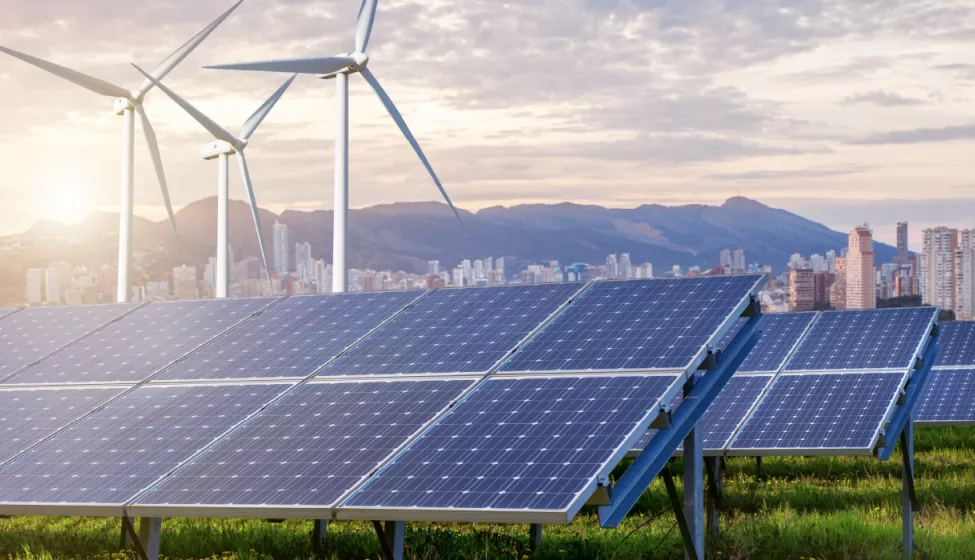April 22, 2021
Over the past decade, growing pressure from consumers, investors, financial institutions, and regulators to adapt processes and products to use sustainable and greenhouse gas (GHG)-free energy sources has prompted efforts to commercialize carbon-neutral hydrogen production methods and technologies across sectors.
Presently, the most widely used production method, steam reforming, converts methane from natural gas into hydrogen and carbon dioxide. While the "grey" hydrogen produced comes with a heavy carbon footprint, this method also lends itself directly to carbon capture and storage. The resulting "blue" hydrogen is anticipated to be the primary method of carbon-neutral hydrogen production in the near-term; however, it is not the long-term goal.
Scientists and engineers hope to one day produce "green" hydrogen at the required industrial scale by splitting water in electrolyzers using wind, solar, or hydroelectric power. This transition will occur in the coming years, during which time industries and consumers will explore more widespread use of hydrogen. As with the transition to any new technology, we expect the shift from grey, to blue, and then to green hydrogen across industries and applications to introduce new challenges.
It will be important for both traditional industrial hydrogen users and new users across industry sectors investing in hydrogen applications to recognize these challenges as they prepare for safe operation in the future hydrogen economy.
Safety First
Hydrogen's properties lead to unique safety considerations that are particularly important for its successful adoption in new uses and applications. Hydrogen is an extremely flammable, buoyant, lightweight substance capable of easily diffusing through materials. As consumer appliances and commercial and passenger vehicles are increasingly powered by hydrogen technologies, the risk of potential fires and explosions will also become increasingly prevalent. This will drive an increasing need to assess and mitigate this risk.
From an infrastructure perspective, existing natural gas pipelines can be used to transport hydrogen in principle; however, hydrogen can also adversely affect the metallurgy of pipelines and the performance of traditionally polymeric or plastic seals.
Oil and gas producers transitioning into renewables will want to recognize and address pipeline embrittlement and hydrogen diffusion as part of their integrity management processes.
For transporting hydrogen between continents, lessons from the safe production and transport of liquified natural gas (LNG) may help inform the overall risk management process for similar cargos of liquefied hydrogen.
The Right Applications, The Right Expertise
Even though many hydrogen applications are not yet mainstream, companies with aggressive 5-10-year goals to decarbonize or reduce GHGs in their operations and their supply chains are beginning to prepare for and invest in a transition to hydrogen. This involves understanding where hydrogen can help and where other technologies (e.g., renewable electricity or biofuels) may be more appropriate.
If aggressive goals are made and disclosed without a reasonable understanding of the opportunities, risks, and uncertainties in the future hydrogen economy, companies may expose themselves to liability from shareholders or consumers if goals are not met due to foreseeable complications with hydrogen adoption.
Specifically, manufacturers of consumer products will likely require electrochemical and systems engineering expertise during product and process design and manufacturing. For example, both electrolyzers and fuel cells — two specific hydrogen technologies seeing immense investment today — are complicated electrochemical processes. By integrating electrochemical expertise into the product development process, manufacturers can help ensure the safety, reliability, and performance of their future hydrogen applications.
How Exponent Can Help
Exponent's multidisciplinary team of metallurgists, thermal and polymer scientists, and electrochemical, chemical, mechanical, and electrical engineers can help firms assess the safety, sustainability, and efficacy of hydrogen technologies. Our services that can help clients prepare for the future hydrogen economy include:
- Helping clients understand the opportunities and challenges associated with blue and green hydrogen production, transportation, and end use to assist with sustainability goal development, financial disclosures related to hydrogen technology conversions, and business planning
- Helping clients understand the opportunities, challenges, and tax implications associated with capturing, sequestering, or using carbon dioxide produced during blue hydrogen production
- Helping clients determine the potential reductions in GHG emissions attainable by converting current products and processes at their own facility or within their supply chain and the product life cycle from fossil fuels to hydrogen
- Risk assessment for pipeline operation and transition from LNG to hydrogen
- Incident investigation and root-cause analysis for hydrogen fires/explosions
- Design support and safety testing for hydrogen fuel-cell vehicles
- Design support for consumer electronic devices leveraging electrolyzed water
Exponent's sustainability consulting can assist companies with a majority of the 17 UN Sustainable Development Goals, including a focus on GHG emissions, water conservation, and sustainable packaging and plastics for a circular economy. Exponent's material scientists, chemists, and chemical, mechanical, electrical, and electrochemical engineers also have experience evaluating performance metrics in the event of contractual disputes and reviewing intellectual property for these systems in cases where infringement has been alleged.



